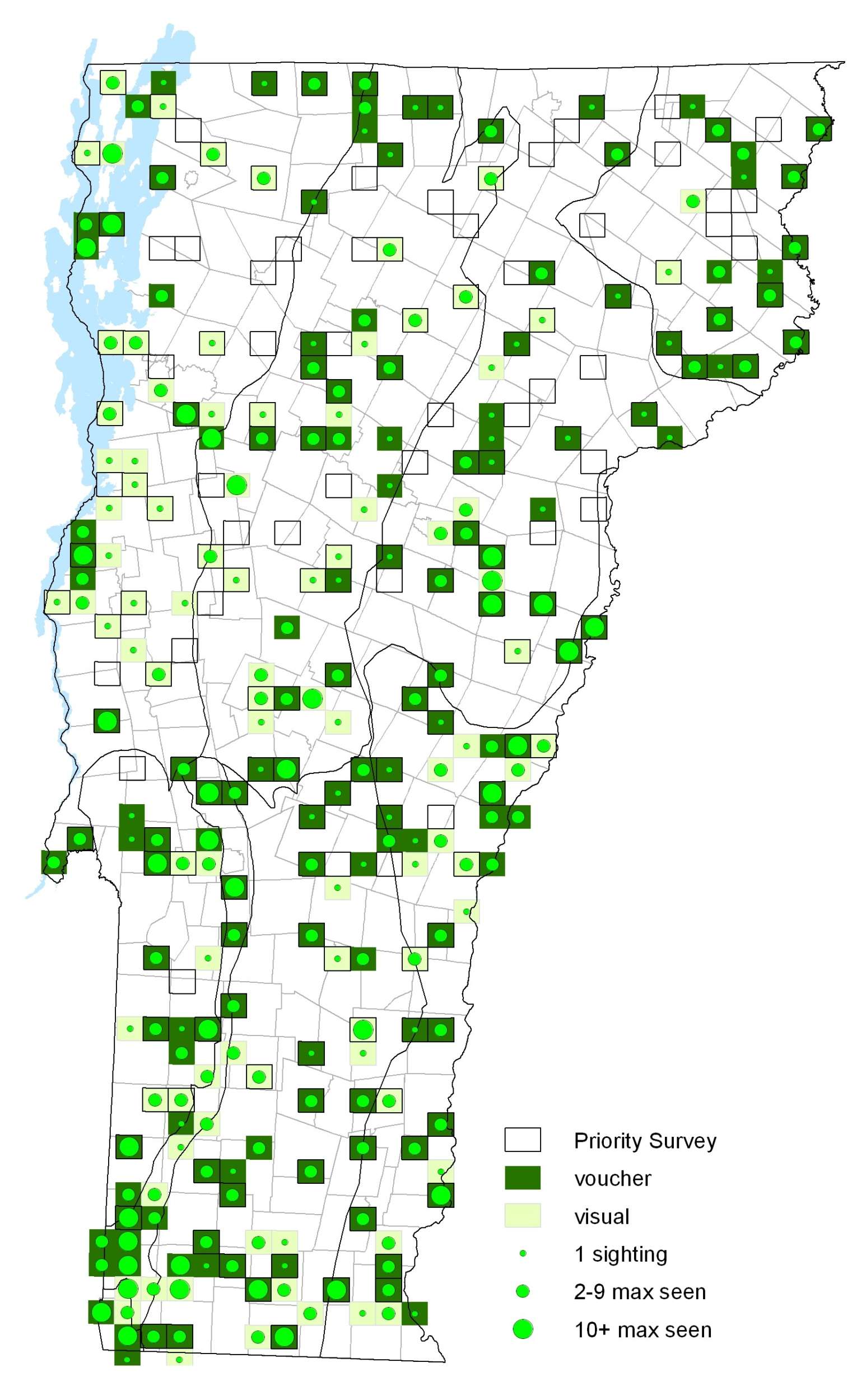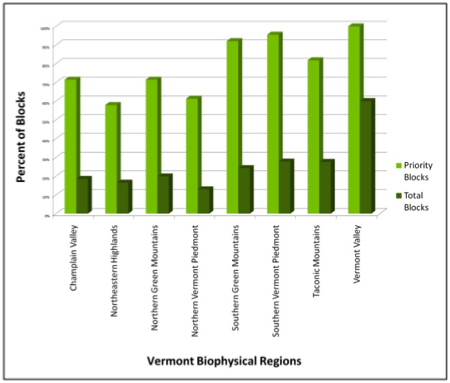Rare throughout the northeast until the 1930’s, but now very common in Vermont, the Orange Sulphur began moving eastward as its host plant, alfalfa, became more commonly cultivated. As an adaptable generalist, these butterflies readily colonize disturbed sites and can often be found in gardens and suburban areas. Males patrol for mates and females are able to distinguish them from Clouded Sulphurs by both the ultraviolet light they reflect from their forewings, as well as a specific pheromone they release. Interestingly, male Clouded Sulphurs look almost identical to male Orange Sulphurs, but absorb ultraviolet light rather than reflecting it. Larvae feed mainly at night and can be an agricultural pest.
Identification
Quite variable. Upperside of male yellow with orange overlay, yellow veins, wide black border, and dark black cell spot. Female yellow or white with irregular black border surrounding light spots. Underside hindwing spot silver with two concentric dark rings, and a spot above it.
Conservation Status
Resident – Common
Vermont S5
Global G5
Flight
Two to three generations in Vermont. Long flight period starting in mid-May and continuing through mid- November near Lake Champlain. Extreme dates: 11 May 2003 in Springfield (B. Eldridge) and 17 November 2006 in South Hero (D. Hoag).
Distribution and Habitat
North American range- Southern Canada to Central Mexico, coast to coast in the United States except for the Florida peninsula. Comments: One of the most widespread and common butterflies in North America.
Found throughout Vermont, the Orange Sulphur utilizes a wide variety of open sites, especially clover and alfalfa fields, mowed fields, vacant lots, meadows, road edges. Host plants are Alfalfa (Medicago sativa), White Clover (Trifolium repens), and White Sweet Clover (Melilotus alba). Adults nectar from many kinds of flowers including Dandelion (Taraxacum F.H. Wigg.), Milkweeds (Asclepias L.), and Goldenrods (Oligoneuron Small).







